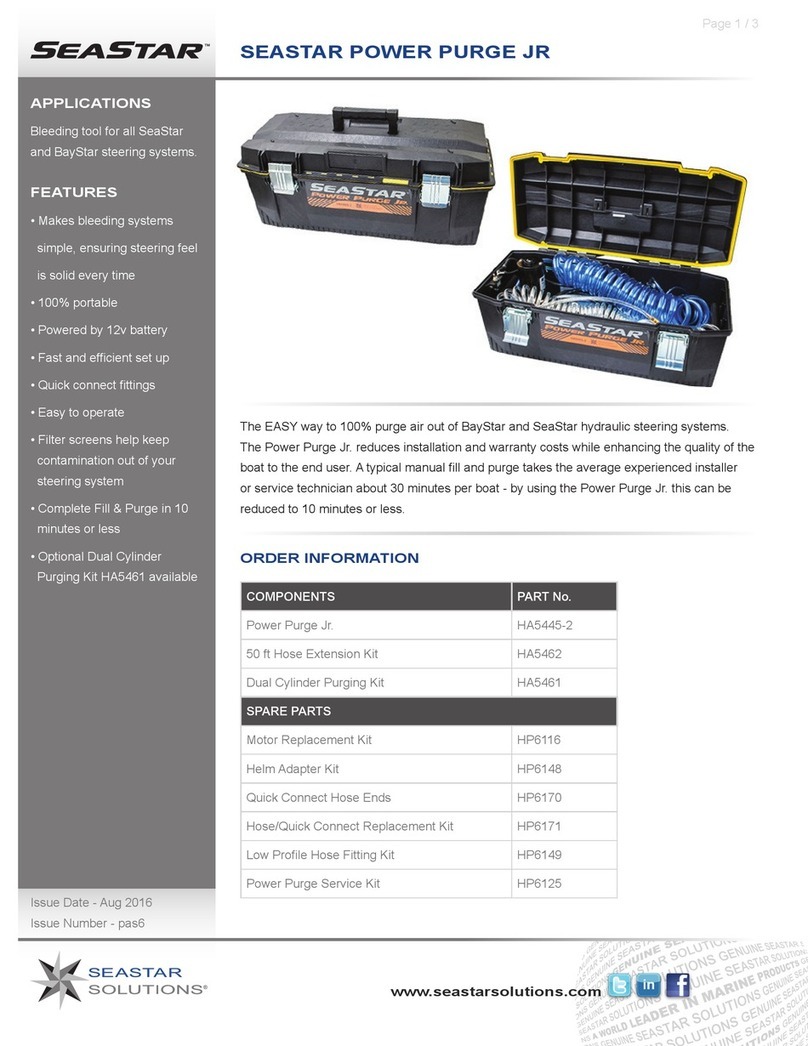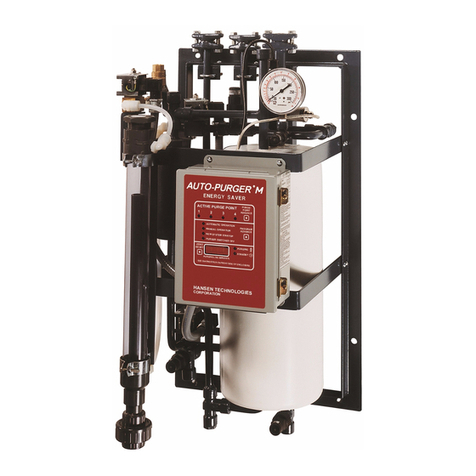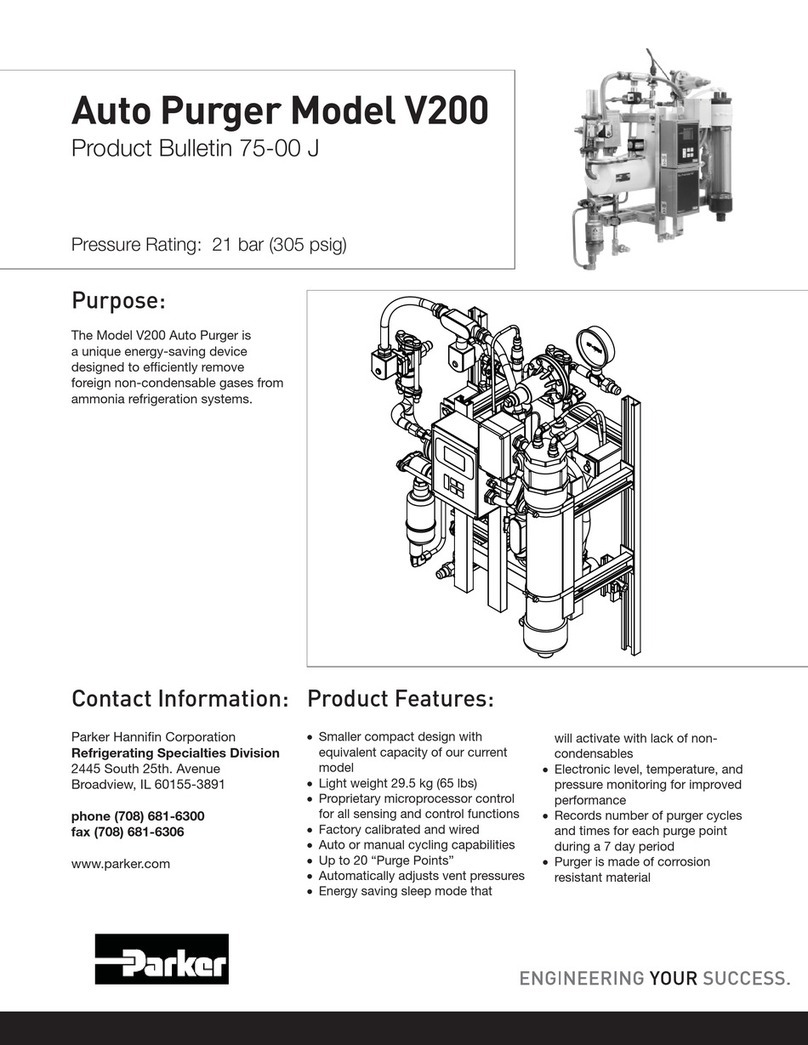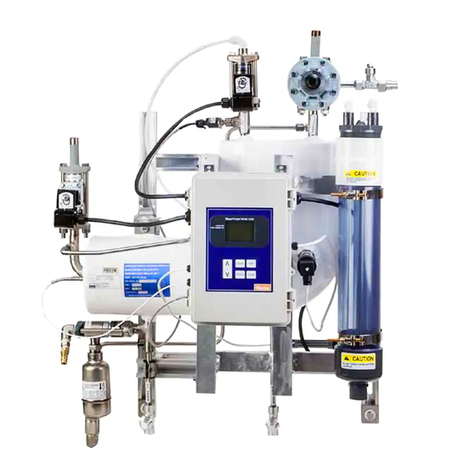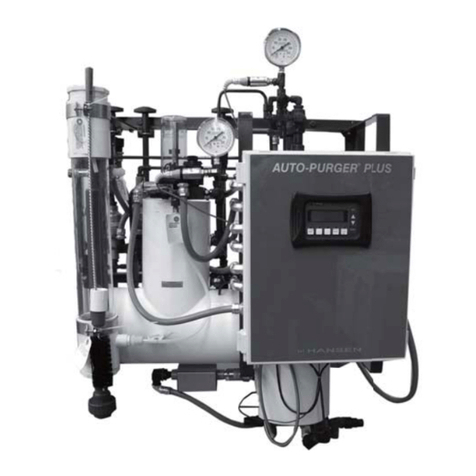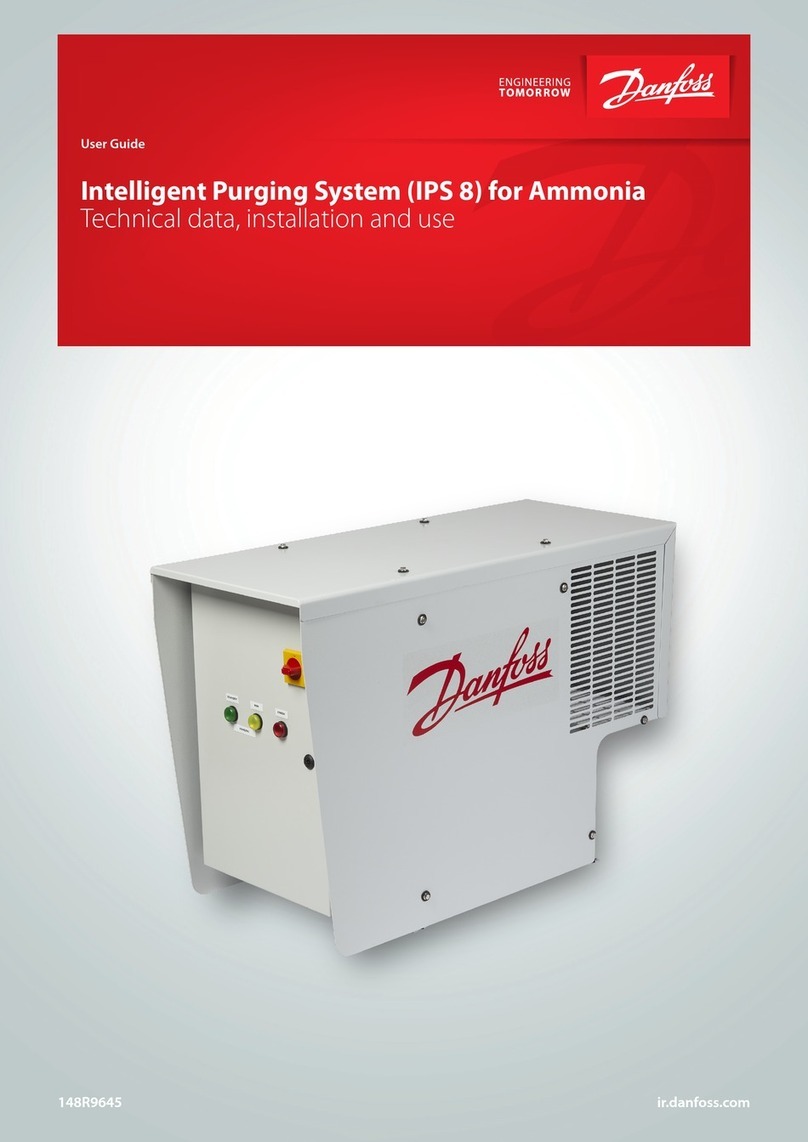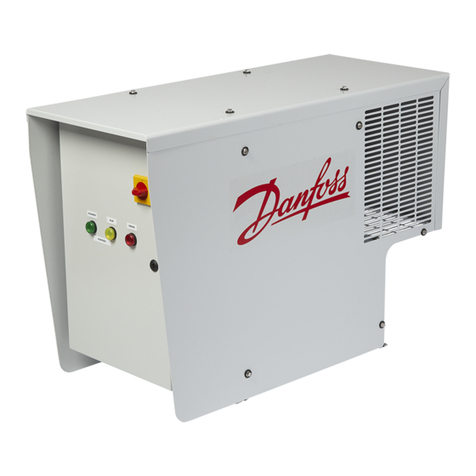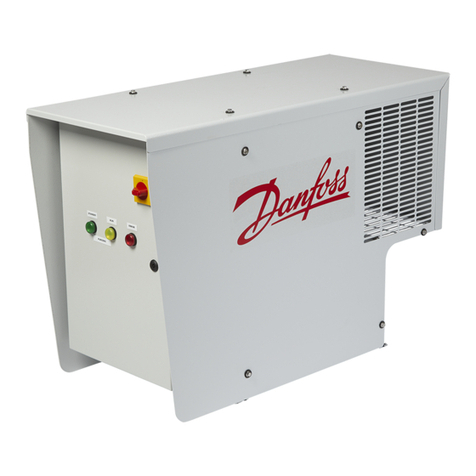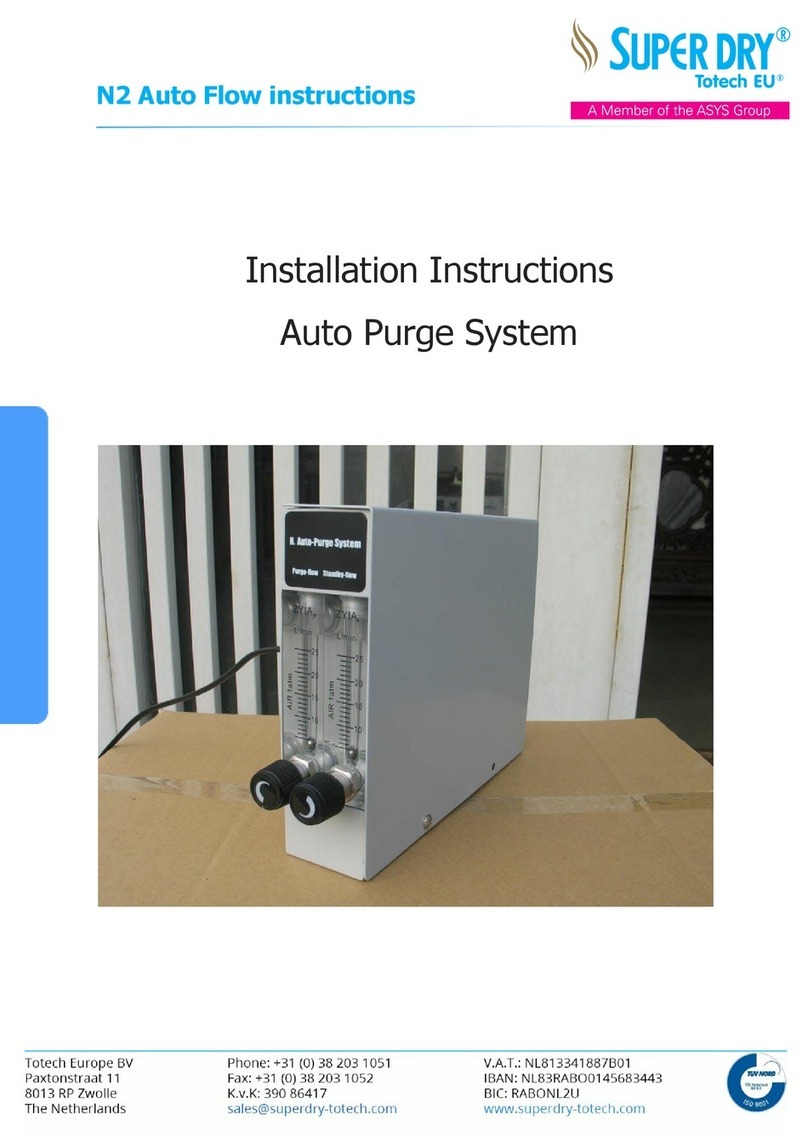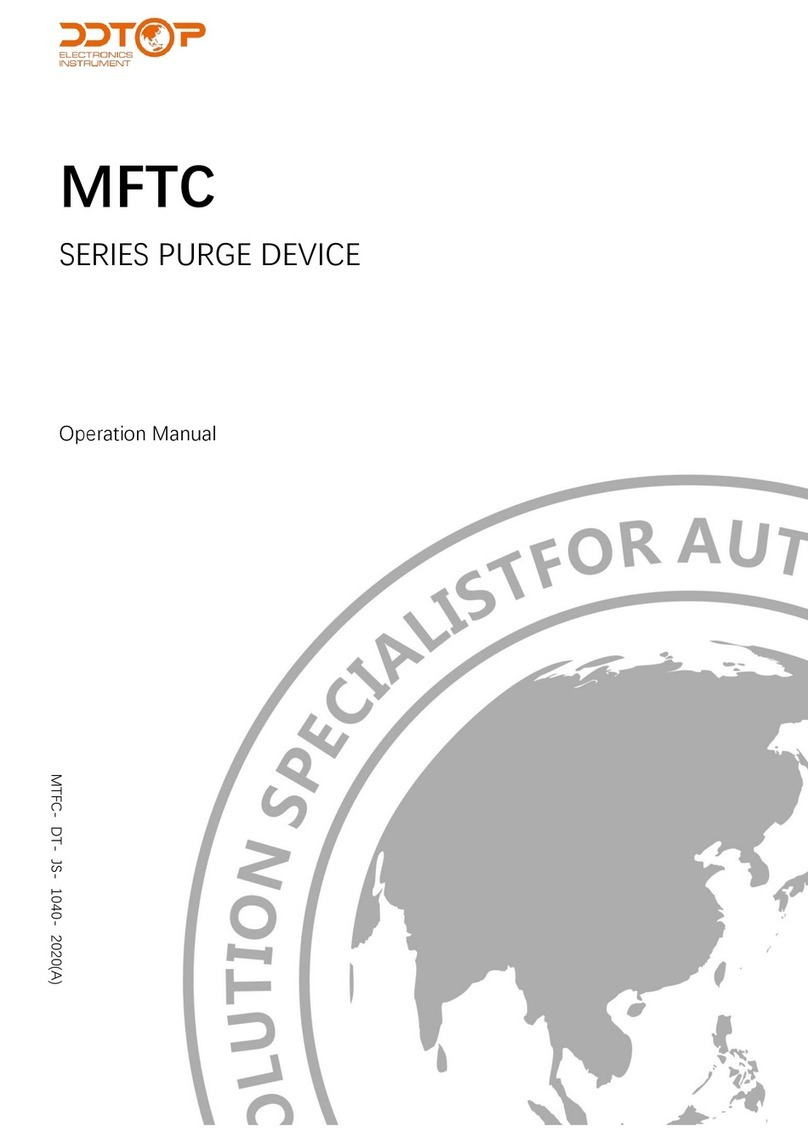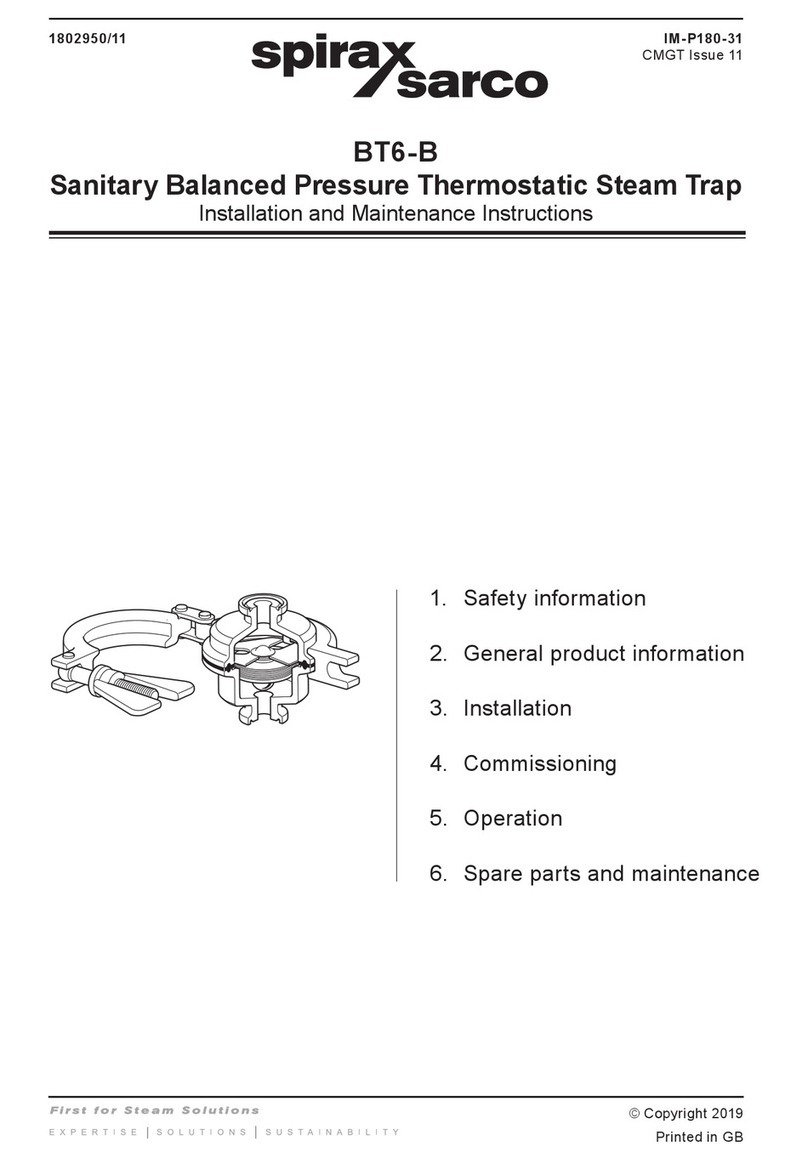
Bulletin 75-00 E / Page 7
Control Features Setup
is includes date, time, purge type
(automatic, manual, etc.), and the
number of purge points being sampled
1. Press and release the “Menu”
button on the keypad. e rapid
purger setup main menu will
appear.
2. When in the main operating
screen press and release the
“Menu” button. Use the Up/
Down arrow buttons to select the
“Setup” option. Press and release
the “Enter” button. Use the Up/
Down arrow keys to select the
“Purge Options” eld. Press and
release the “Enter” button, “Setup
Points” will be highlighted. Press
and release the “Enter” key on the
keypad. Using the Up/ Down arrow
keys, select how many purge points
are being used. When done, press
and release the “Enter” key. Now
we must enter the time (in minutes)
each purge point is sampled. is
setting is less important when the
“Automatic” purge mode is selected.
In this mode, sample times will
change up or down based on vent
cycle history. With the Point and
Duration highlighted (darkened
bar across the eld), press and
release the “Enter” key. An arrow
will appear to the left of the time to
be changed. Using the Up/ Down
arrow keys, select a time from 5 – 20
minutes in 5 minute increments.
Press and release the “Enter” key
when done. Use the Up/ Down
arrow key to select the next point
and duration to be set. Follow the
same procedure for each of the
purge points being used. When
done, press and release the “Menu”
key to return to the purge options
screen.
“Auto” To select “Auto”, press and
release the “Enter key. is is all
that is required to operate in the
“Auto” mode (as dened in this
manual). Press and release the
“Menu” key to return to the main
screen. If you need to terminate
the active point being sampled
and move to the next, press and
release the “Terminate” (TERM)
key. Terminate Active Point (1-20)
should be highlighted. Press and
release the “Enter” key to move to
the next purge point. If you need
to stop all Purging in the “Auto”
mode, select the Terminate Purge
Cycle by using the Up/ Down arrow
keys. Press “Enter” and release to
make your selection. In order to
release the system from Purge Hold,
re-select the “Auto” purge option
again as explained at the beginning
of this step.
V
LIQUID SOL
SUCTION SOL
SOFT GAS SOL
HOT GAS SOL
EQUALIZE SOL
FAN
MAIN MENU
START UP
SETUP
HISTORY
OTHER SETTINGS
SELECT WITH V PRESS (ENTER)
PRESS (MENU) TO CANCEL
Main Menu Options
Use the Up/ Down arrow buttons to
select the “Setup” option. Press and
release the “Enter” key.
V
LIQUID SOL
SUCTION SOL
SOFT GAS SOL
HOT GAS SOL
EQUALIZE SOL
FAN
SETUP
SET TIME AND DATE
PURGE OPTIONS
CALIBRATE PRESURE INPUT
TRIM TEMPERATURE READING
CHANGE LIQUID FEED SETTINGS
SELECT WITH V PRESS (ENTER)
PRESS (MENU) TO CANCEL
Setup Menu
Press and release the “Enter” key
a second time to enter the current
date. Use the Up/ Down arrow keys
to select the correct month. Press
and release the “Enter” button to
move to the next eld. Repeat these
steps to enter the day and year.
When nished, press, and release
the “Enter” key. Enter the current
day of the week by again using the
Up/ Down arrow keys. Next, enter
the current time using the same set
of key strokes. Don’t forget to select
between AM and PM in this screen.
When you’re done, press the “Enter”
key to return to the main menu.
LIQUID SOL
SUCTION SOL
SOFT GAS SOL
HOT GAS SOL
EQUALIZE SOL
FAN
SET TIME/DAY
WHAT IS THE DAY? TUE
SELECT WITH V PRESS (ENTER)
PRESS (MENU) TO CANCEL
V
Time / Date Setup Screen
LIQUID SOL
SUCTION SOL
SOFT GAS SOL
HOT GAS SOL
EQUALIZE SOL
FAN
PURGEDURATION
01 05 MIN
02 05 MIN
SELECT WITH V PRESS (ENTER)
PRESS (MENU) TO CANCEL
V
Purge Point Duration Setup Screen
3. Use the Up/ Down arrow keys to
select the “Purge Type” option and
press and release the “Enter” key. 3
Purge Options are available to you
in this screen.
LIQUID SOL
SUCTION SOL
SOFT GAS SOL
HOT GAS SOL
EQUALIZE SOL
FAN
PURGE OPTION
AUTO
MANUAL
TIME BASED
SELECT WITH V PRESS (ENTER)
PRESS (MENU) TO CANCEL
V
Purge Option Menu
LIQUID SOL
SUCTION SOL
SOFT GAS SOL
HOT GAS SOL
EQUALIZE SOL
FAN
TERMINATE PURGE
TERMINATE ACTIVE POINT 1
TERMINATE PURGE CYCLE
SELECT WITH V PRESS (ENTER)
PRESS (MENU) TO CANCEL
V
Terminate Purge Menu
“Manual” To select the “Manual”
mode, use the Up/ Down arrow key
to highlight the manual option.
Press and release the “Enter” key
to save your selection. To initiate a
purge cycle in the Manual mode,
press and release the “Initiate”
(INIT) key. Using the Up/ Down
arrow keys, select the point that you
wish to purge. Press the “Enter” key.
e point selected along with the
duration of time this point will be
sampled is shown toward the top of
the display. To terminate a purge in
the manual mode, press and release
the “Terminate” (TERM) key. Using
the Up/ Down arrow key, select


